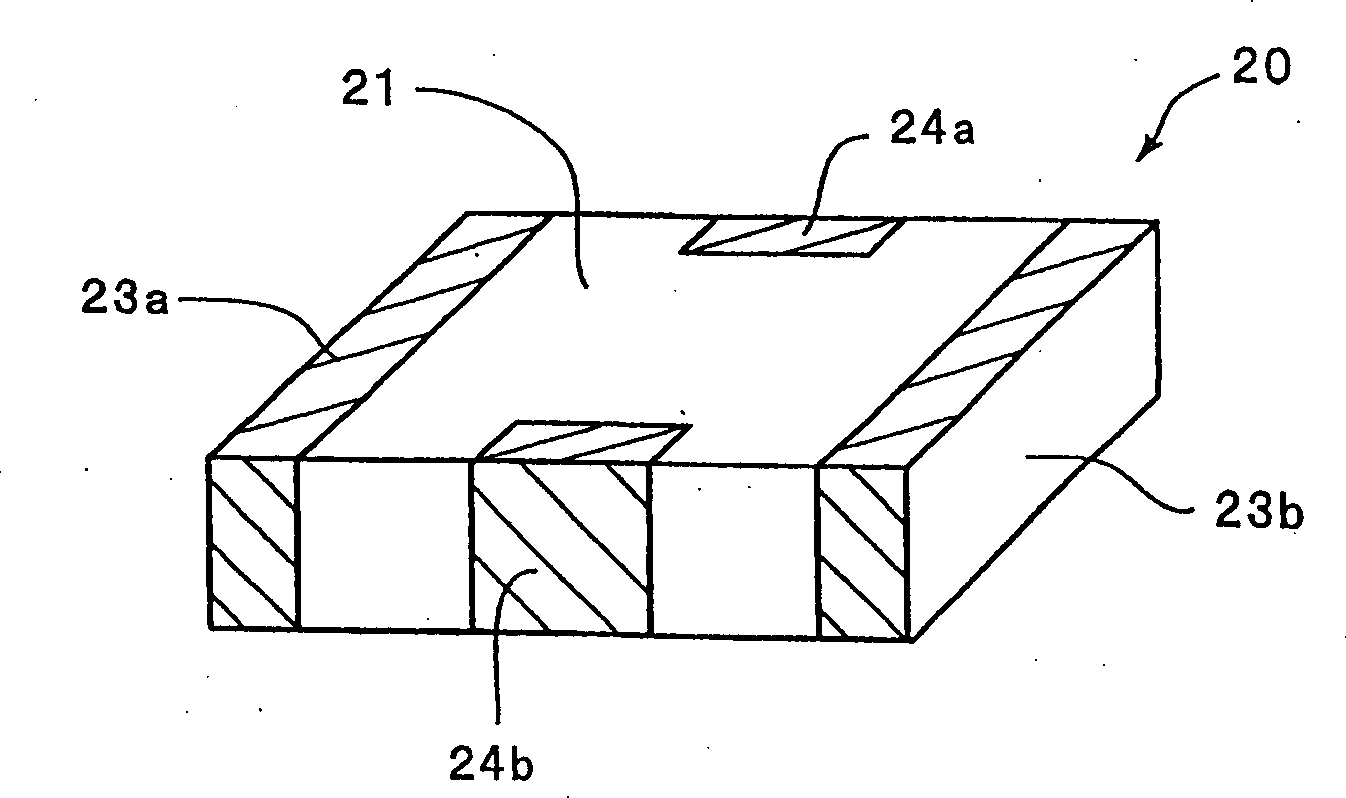Non-reduced dielectric ceramics and ceramic electronic element using the same
A technology of ceramic electronic components and dielectric ceramics, which is applied in the direction of electrical components, fixed capacitor parts, ceramics, etc., can solve the problems of insulation resistance and dielectric loss performance deterioration, becoming semi-conductive, application restrictions of ceramic electronic components, etc. , to achieve the effects of insulation resistance and dielectric loss deterioration, reliability enhancement, and excellent temperature stability
- Summary
- Abstract
- Description
- Claims
- Application Information
AI Technical Summary
Problems solved by technology
Method used
Image
Examples
example 1
[0051] Experiments were performed to determine the ratio of tungsten bronze and pyrochlore-type crystal phases contained in non-reducing dielectric ceramics.
[0052] First, prepare TiO 2 and RE 2 o 3 powder as raw material. Rare earth elements as shown in Table 1 were used. A predetermined amount of the above-mentioned raw material powders is weighed, wet-mixed using a ball mill, and then dried. Then calcined in air at 900-1000°C for 2 hours to obtain 2 Ti 2 o 7 Crystalline powder.
[0053] Except with RE 2 Ti 2 o 7 In addition to the powder of the crystalline phase, BaCO is also prepared 3 、TiO 2 , MnCO 3 , CuO and V 2 o 5 powder. These powders were weighed to meet the composition shown in Table 1, wet mixed using a ball mill, and dried. Calcining in air at 900-1100° C. for 2 hours to obtain calcined powder.
[0054] The preparation composition is 10Li 2 O-20SiO 2 -20B 2 o 3 - 50BaO (% by weight) glass powder. The glass powder was added to 100 parts by...
example 2
[0080] In Example 2, samples were prepared to examine the influence of the contents of Mn, glass components, Cu and V as minor components.
[0081] table 3
[0082] Table 3 also shows Sample 19 prepared in Example 1.
[0083] Table 4
[0084] Tables 3 and 4 show that even in the 3 -bTiO 2 -cRE 2 Ti 2 o 7 A minor component is added to the main component, wherein the minor component is about 3-35 moles of MnCO relative to 100 moles of Ti in the main component 3 , about 3-25 parts by weight of the glass component relative to 100 parts by weight of the main component, about 0-25 moles of CuO relative to 100 moles of Ti in the main component, about 0-25 moles relative to 100 moles of Ti in the main component VO 5 / 2 , It can also be burned at 980-1020°C in a reducing atmosphere. Resistivity up to 1.0×10 9 Ω·m, and, although not shown in Table 4, the Q factor at 1 MHz is also as high as 1000, or higher. The rate of change of capacitance with temperature...
PUM
| Property | Measurement | Unit |
|---|---|---|
| melting point | aaaaa | aaaaa |
| electrical resistivity | aaaaa | aaaaa |
| electrical resistivity | aaaaa | aaaaa |
Abstract
Description
Claims
Application Information
 Login to View More
Login to View More - R&D
- Intellectual Property
- Life Sciences
- Materials
- Tech Scout
- Unparalleled Data Quality
- Higher Quality Content
- 60% Fewer Hallucinations
Browse by: Latest US Patents, China's latest patents, Technical Efficacy Thesaurus, Application Domain, Technology Topic, Popular Technical Reports.
© 2025 PatSnap. All rights reserved.Legal|Privacy policy|Modern Slavery Act Transparency Statement|Sitemap|About US| Contact US: help@patsnap.com



